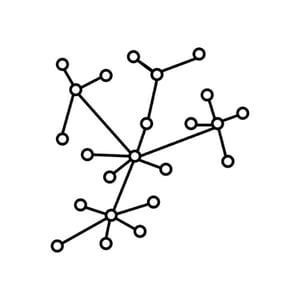 What happens when you take an activity that is traditionally controlled or managed by a central system or authority, and distribute that control into the hands of larger communities?
What happens when you take an activity that is traditionally controlled or managed by a central system or authority, and distribute that control into the hands of larger communities?
Depending on the activity, some very interesting and beneficial things can happen, and people who enjoy having that central control can become nervous.
We’re talking about “decentralization” today, a growing trend that has made its way from the outlaw fringes to the mainstream.
What Is “Decentralization”?
First, let’s explore what’s meant by decentralization. It means different things to different people and in different contexts, so for purposes of this article, we’ll define it as the transfer of control of an activity from a central authority to larger groups of people. That’s a little abstract, so let’s illustrate it with some examples.
Blockchain
This technology not only enables decentralization; it is in fact powered by it. Traditionally, activities such as electronic financial transactions, the granting and authentication of credentials and licenses, and other activities that are prone to fraud have been controlled by centralized systems and protected, to a greater or lesser degree, by a centrally controlled access control scheme. By relying instead on public-key encryption and the concept of a distributed ledger of transactions, blockchain not only eliminates the need for a centralized database of transactions but, counterintuitively, makes it almost impossible to commit fraud.
In so doing, some types of transactions are executed quite outside the control or prying eyes of central authorities. Bitcoin transactions, for example, are conducted outside the banking system and therefore beyond the control of governments. Some national governments, fearing criminal activities or loss of tax revenue, don’t like this idea at all and have banned the use of cryptocurrencies inside their borders.
Open-Source
Software, particularly operating systems, were once jealously guarded secrets, subject to patent and licensing disputes and charges of intellectual property theft. This state of affairs made some kinds of software extremely expensive. There is still a large amount of proprietary software out there, but many such software products have compelling competition from open-source development communities. Almost no one uses UNIX anymore, with its high licensing fees and occasional legal confusion over who owns what parts of it. UNIX has been almost entirely supplanted by the open-source Linux, which is free to obtain and deploy. Some popular programming languages, notably Python, are also open-source.
The idea of a community of unpaid volunteers developing complex, business-critical software and distributing it free of charge would have been ludicrous 30 years ago, but it’s now seen as a viable alternative to the traditional software licensing and sales model. There are even efforts now to bring open-source to the hardware world as well.
Power Generation
This example is a bit outside the computing realm, but it still serves as a good example of decentralization. At one time, electricity was generated by power companies, who owned the generation equipment, transmission lines, substations, transformers…everything, in short, up to and including the meter. In a way, this model worked well, because power companies were able to stably control voltage and frequency on the grid, and when something went wrong, there was “one throat to choke.” Now, with rooftop solar and wind farms, we have entered the era of distributed generation, wresting control of the grid from the large power companies and their carbon-belching fossil-fuel plants. Power companies don’t necessarily like this, and have resisted efforts to allow homeowners and businesses to feed power into the grid, but regulators in many jurisdictions have been open to it.
There’s still quite a bit of work to be done in this area, such as guaranteeing grid stability, power storage to compensate for intermittent wind and solar output, and financial models that ensure return on investment and funding for grid infrastructure maintenance and upgrades. But when those details are worked out, we will have a fully decentralized electricity system that will be more responsive to demand, more stable, and less prone to widespread outages.
What’s Next for Decentralization?
It’s possible to imagine other services that can benefit from decentralization, and indeed some already have: witness the crowdfunding and crowdsourcing movements and the “gig economy.” So there’s no doubt that decentralization is a growing trend, but it will only work for a given service if it is perceived as more reliable, more secure, and more economical than the centralized model. With the success of the examples above, look for more ideas for decentralizing both government and private services in the future. Some will succeed and some will fail, and some will be perceived (mainly by those who stand to lose the most) as an unacceptable threat to the status quo.
What do you think?

















